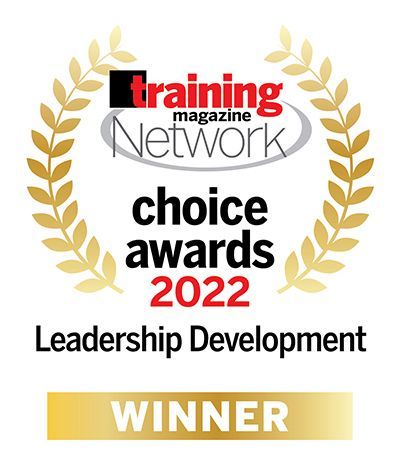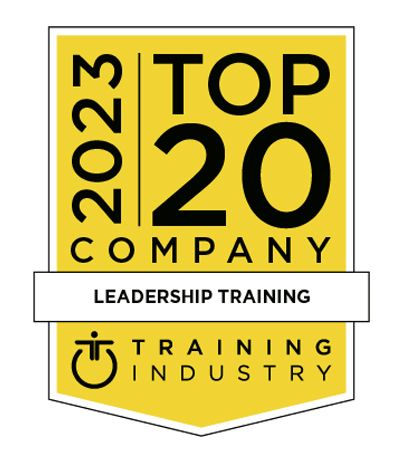Home > Articles
Articles

20 Dec, 2023
In the realm of leadership, the ability to build high-performing teams stands as a linchpin for organizational success. This guide, "Building High-Performing Teams: Strategies for Leaders," delves into the nuances of not just assembling teams but nurturing them into entities that surpass expectations. Why High-Performing Teams Matter High-performing teams are the pillars of organizational achievement, transcending individual capabilities to achieve collective excellence. They embody a synergy that transforms tasks into triumphs. Understanding Team Dynamics Recognizing Individual Strengths and Weaknesses To build a high-performing team , leaders must first discern the unique strengths and weaknesses of each team member. This isn't merely about skills but understanding the individual's working style, preferences, and areas for development. By recognizing these nuances, leaders can strategically assign roles that capitalize on strengths and support weaknesses. Fostering a Collaborative Environment Collaboration isn't a by-product but a deliberate choice. Leaders must foster an environment where collaboration becomes instinctive. Team members should feel not only comfortable sharing ideas but compelled to do so. This involves promoting active listening, valuing every opinion, and creating spaces for brainstorming and collective problem-solving. Setting Clear Expectations Ambiguity is the enemy of productivity. Leaders must set clear expectations for each team member, defining roles, responsibilities, and expected outcomes. This clarity ensures that everyone is aligned with the team's objectives, minimizing misunderstandings, and maximizing productivity. Strategies for Team Formation Creating Diverse Teams Diversity isn't just a checkbox; it's a strategic advantage. Beyond demographic differences, diversity encompasses varied perspectives, experiences, and approaches to problem-solving. Leaders should intentionally create teams with members from different backgrounds, fostering an environment rich in creativity and innovation. Balancing Skills and Roles Effective teams are not accidental assemblies; they are purposefully crafted with a balance of skills and roles. Leaders need to align the team's objectives with the individual skills of each member. This involves conducting skill assessments, understanding each team member's strengths, and strategically assigning roles that contribute to the team's overall success. Encouraging Team Bonding Team bonding goes beyond icebreakers and social events. It's about building genuine connections among team members. Leaders should facilitate activities that encourage camaraderie, trust, and a sense of shared purpose. From team-building workshops to informal gatherings, these bonding experiences enhance collaboration and team cohesion. Communication and Feedback Open and Transparent Communication Communication is the lifeblood of high-performing teams. Leaders should foster an environment of open and transparent communication where every team member feels heard and valued. This involves regular team meetings, one-on-one check-ins, and creating platforms for sharing ideas and concerns. Regular Feedback Loops Feedback is not a sporadic event but a continuous loop. Leaders should establish regular feedback sessions to discuss performance, address concerns, and provide constructive input. This two-way communication fosters a culture of improvement, ensuring that the team is always on the path of growth. Addressing Conflict Constructively Conflict within a team is inevitable, but its resolution can be transformational. Leaders should guide their teams in addressing conflicts constructively. This involves facilitating open discussions, encouraging empathy, and guiding the team towards resolutions that strengthen rather than weaken relationships. Empowering and Motivating Teams Providing Autonomy Empowering teams involves trusting them with autonomy. Leaders should give their teams the freedom to make decisions within the scope of their responsibilities. Autonomy not only fosters a sense of ownership but also unleashes creativity and innovation. Recognition and Rewards Acknowledging individual and collective achievements is vital to keep any team stay motivated. Recognition can be as simple as public praise or more tangible rewards such as bonuses or promotions. This recognition serves as a powerful motivator, reinforcing positive behaviour and encouraging continued excellence. Cultivating a Positive Team Culture Team culture isn't a passive outcome; it's a deliberate creation. Leaders should actively cultivate a positive team culture where success is celebrated, and challenges are viewed as opportunities for growth. This involves promoting a "can-do" attitude, resilience in the face of setbacks, and a collective commitment to the team's mission. FAQs: Building High-Performing Teams Q1: What makes a team high-performing? A1: High-performing teams exhibit strong collaboration, diverse skills, clear communication, and a shared commitment to achieving goals. Q2: How can leaders identify the strengths of individual team members? A2: Leaders can identify strengths through assessments, team discussions, and observing individual performance. Recognizing and leveraging these strengths is key to team success. Q3: Why is diversity important in a team? A3: Diversity brings varied perspectives and approaches, enhancing creativity and problem-solving. It fosters innovation and adaptability within the team. Q4: How often should leaders provide feedback to their teams? A4: Regular feedback is crucial. Leaders should establish a cadence for feedback, whether through regular check-ins, project reviews, or other appropriate forums. Q5: What role does trust play in team performance? A5: Trust is foundational. High-performing teams are built on trust among members and with the leader. It encourages open communication and risk-taking. Q6: How can leaders address conflicts within their teams? A6: Leaders should address conflicts openly and constructively. Encourage open communication, seek to understand all perspectives, and guide the team towards a resolution. Conclusion "Building High-Performing Teams: Strategies for Leaders" is not just a manual; it's a roadmap for leaders who aspire to elevate their teams beyond conventional expectations. By understanding team dynamics, strategically forming teams, fostering effective communication, and empowering teams with autonomy and motivation, leaders can pave the way for enduring success. High-performing teams aren't just products of chance; they are meticulously cultivated through strategic leadership and a commitment to continuous improvement. The journey of building such teams isn't a task; it's a legacy in the making.

23 Nov, 2023
In the dynamic realm of leadership development, fostering a culture of innovation is no longer a choice but a necessity. "Nurturing a Culture of Innovation in Leadership Development" is the mantra for thriving in a world where change is the only constant. In this guide, we'll explore the intricacies of nurturing innovation within leadership development. The Essence of Innovation Innovation as a Driving Force Innovation isn't a luxury; it's the lifeblood of leadership development. It's the engine that powers organizations forward, helping them stay competitive and relevant in a fast-changing world. Leadership development programs must emphasize that innovation isn't optional; it's a fundamental component of modern leadership. Nurturing a Mindset Innovation starts with the right mindset. Leaders must create an environment where creativity, curiosity, and forward thinking are encouraged. This mindset shift is the foundation of nurturing innovation. A Cultural Shift Fostering innovation is about more than new strategies; it's a cultural transformation that should touch every aspect of leadership development. This shift involves breaking down hierarchies and silos to create an environment where innovation is celebrated, expected, and everyone has the potential to be an innovator. The Building Blocks of Innovation Empowering Creativity Fostering innovation begins by empowering creativity. Leadership development should empower team members to think outside the box, challenge the status quo, and pursue creative solutions. Embracing Risk Innovation involves risk. Leaders should create a safe space for calculated risk-taking, where failures are viewed as opportunities for growth. It's these failures that often lead to the most significant innovations. Encouraging Collaboration Innovative ideas often come from collaborative efforts. Leadership development programs should promote cross-functional collaboration and idea-sharing. It's about recognizing that innovative solutions can come from unexpected places. Providing Resources Innovation requires resources, from time and training to technology and mentorship. Leaders should ensure their teams have what they need to innovate effectively. This means allocating dedicated time for innovation-related activities. It involves providing training and development opportunities for team members to enhance their creative and problem-solving skills. Leading by Example Walking the Talk Leaders must model innovative behaviour. When team members see their leaders actively engaged in creative problem-solving, they're more likely to follow suit. Leading by example means demonstrating a commitment to innovation in practical ways. This could involve initiating or participating in brainstorming sessions, pilot projects, or creative workshops. It's about showing that innovation is not just a theory but a practice that leaders actively endorse. Celebrating Innovation Recognition and celebration play a pivotal role in fostering a culture of innovation. Leaders should actively celebrate innovative achievements within their teams and organizations. This recognition can take various forms, from verbal praise to awards and incentives. Leadership development programs teach leaders how to recognize and celebrate innovation effectively. It's not just about acknowledging big, groundbreaking innovations; even small, incremental changes should be celebrated. Small wins can often lead to more significant breakthroughs. Setting Innovation Goals Leaders can further foster innovation by setting clear innovation goals. These goals provide direction and purpose for innovative efforts. They help teams understand what the organization aims to achieve through innovation. Leadership development programs equip leaders with the skills to set and communicate innovation goals effectively. This involves not only defining the goals but also creating a plan to achieve them. It's about breaking down the larger innovation objective into smaller, manageable steps. Nurturing Innovation in Leadership Development: Success Stories Case Study 1: Google's "20% Time" Google's "20% Time" initiative allowed employees to spend 20% of their workweek on personal projects, leading to innovations like Gmail and Google News. Case Study 2: Apple's Design Thinking Apple's commitment to design thinking led to groundbreaking products that revolutionized the tech industry. Case Study 3: Amazon's Customer-Centric Innovation Amazon's focus on customer needs and innovation has made it a global e-commerce giant. Conclusion Nurturing a culture of innovation in leadership development is not just a choice; it's an essential path to success. It empowers creativity, embraces risk, encourages collaboration, provides resources, and sets the stage for leaders to lead by example. By celebrating innovation and setting clear innovation goals, leaders foster a culture where creativity and innovation are the norm. In today's rapidly changing world, innovation is not an option; it's the driving force that keeps organizations relevant and ahead of the curve.


















